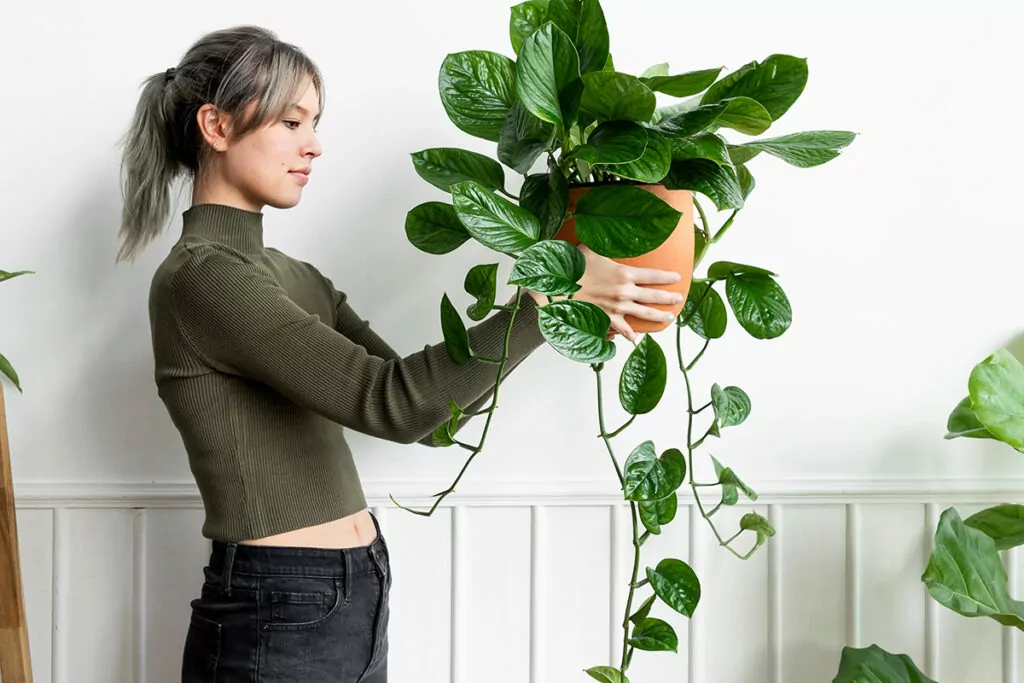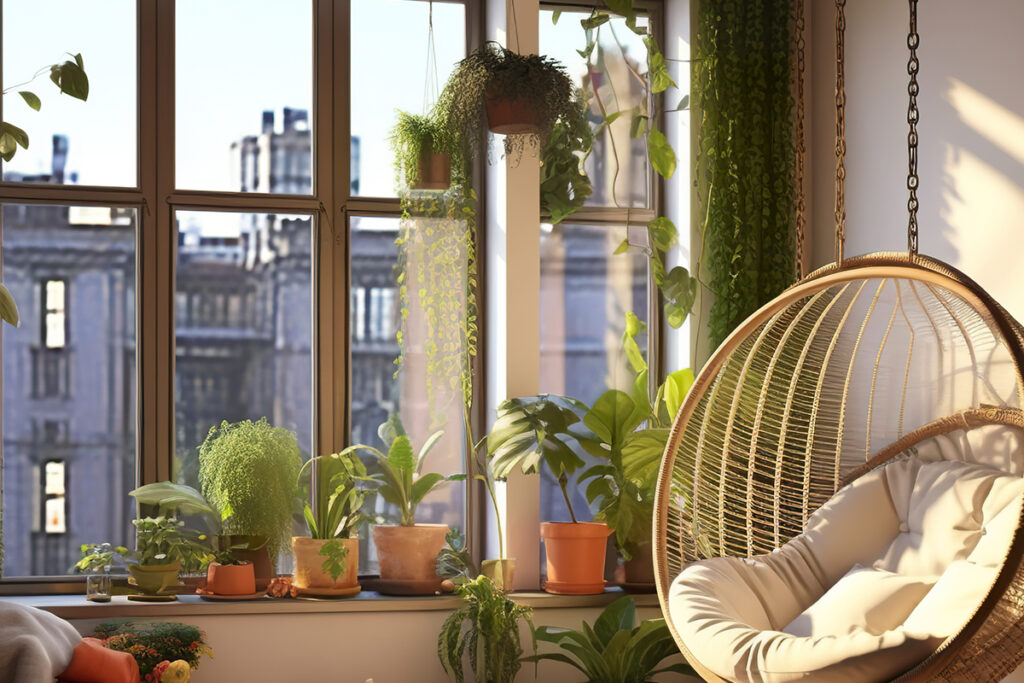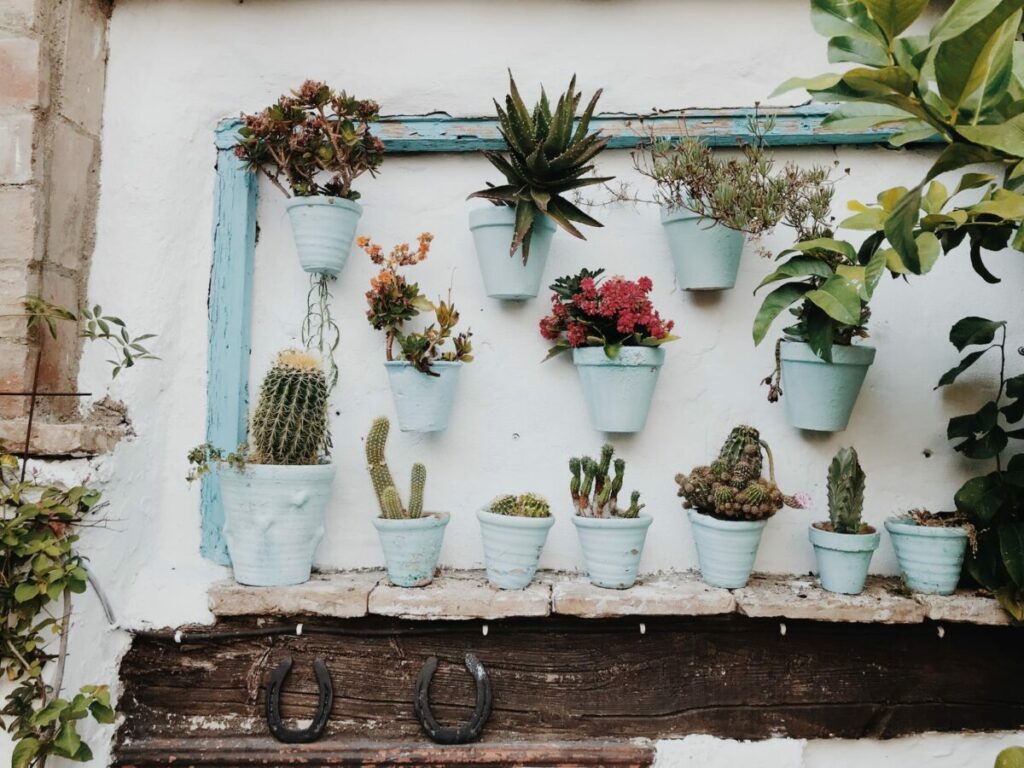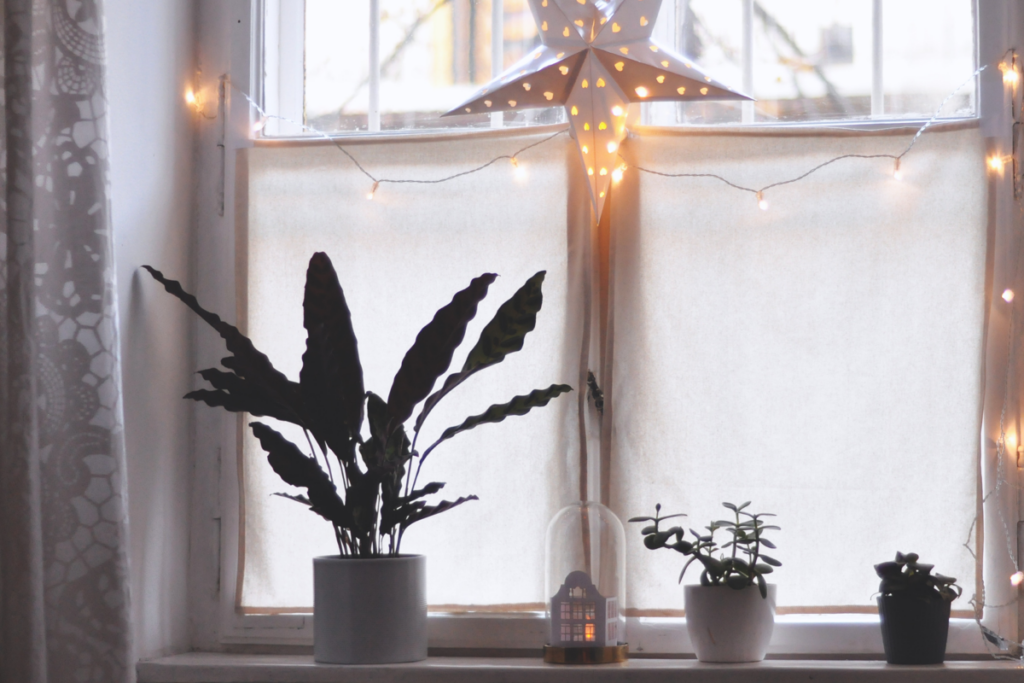Hanging plants from the ceiling is a wonderful way to bring the beauty of nature indoors and add a touch of green to your living space. Whether you have a green thumb or just want to experiment with plant decor, this will provide you with step-by-step instructions and creative alternatives for hanging plants from the ceiling. Discover various methods that will allow you to achieve a stunning display while considering hiring Taskers to help transform your home into a lush oasis.
6 Ways to Hang Plants From the Ceiling Without Drilling
If drilling is not an option or you prefer not to make permanent modifications to your ceiling, there are alternative methods to hang plants. Here are several options to consider:
-
Magnetic Hooks:
Use magnetic hooks that can attach to metal surfaces, such as beams or vent covers, to hang lightweight plants. -
Tension Rods:
Install tension rods between walls or other sturdy structures to create a hanging space for plants. This method is particularly suitable for lightweight plants in small pots. -
Suction Cup Hangers:
Attach suction cup hangers to smooth surfaces, such as glass or tile, to hang plants. Make sure the hangers are strong enough to support the weight of your plants. -
Adhesive Hooks:
Choose adhesive hooks specifically designed for hanging objects on walls or ceilings. These hooks offer a temporary hanging solution and can be easily removed without damaging surfaces. -
Bar Clamps:
Utilize bar clamps or adjustable clamps to create a hanging spot for plants. Attach the clamps to a horizontal structure, such as a beam or railing, and suspend your plants from them. -
S-Hooks:
Hang plants using S-hooks by attaching them to existing fixtures, such as curtain rods or hanging light fixtures. Ensure the hooks are strong enough to support the weight of your plants.

Things to Think About Before Hanging Indoor Plants

Before you start hanging plants from your ceiling, there are a few important factors to consider:
- Type of plant: Different plants have varying requirements for light, humidity, and space. Ensure that the plants you choose are suitable for indoor hanging and can thrive in the conditions of your home.
- Type of pot: The weight and size of the pot will impact the hanging method you choose. Ensure that the pot you select is appropriate for hanging and has proper drainage.
- Location: Identify the ideal location in your home where your hanging plants will receive adequate light and air circulation. Consider the proximity to windows, doors, and other elements that may affect the plants’ well-being.
- Other safety aspects: Be mindful of potential hazards such as low ceilings, high foot traffic areas, or proximity to electrical fixtures. Make sure your hanging plants won’t obstruct movement or pose a risk.
How to Hang a Plant From the Ceiling Using a Drill
If you’re comfortable with drilling, this method offers a secure and reliable way to hang plants from your ceiling. Follow these steps:
-
Step 1:
Get Your Tools: Gather the necessary tools, including a drill, appropriate drill bit, measuring tape, pencil, and a sturdy ceiling hook or screw eye. -
Step 2:
Drill & Install Hook: Use a measuring tape and pencil to mark the desired location for your plant. Drill a pilot hole using the appropriate drill bit, then screw in the ceiling hook or screw eye securely. -
Step 3:
Hang Your Plant: Attach a sturdy hanger or rope to the hook, ensuring it can support the weight of your plant. Adjust the length as desired, then hang your potted plant from the hanger or rope.
Methods for Locating Studs in Ceilings
To find studs in the ceiling, you can use a stud finder, which is a handheld electronic device that detects changes in density behind the drywall. First time using one? Don’t stress! Here’s how they work in 4 easy steps:
- Turn on the stud finder and place it against the ceiling.
- Slowly move the stud finder in a horizontal direction until it indicates the presence of a stud.
- Mark the location of the stud using a pencil or masking tape.
- Repeat the process in different areas of the ceiling to locate additional studs if necessary.
By locating the ceiling studs, you can ensure a secure and sturdy attachment point for hanging plants.
Other Considerations When Hanging Drywall
If you want to hang a plant from a drywall ceiling, it’s important to use appropriate hanging hardware. Drywall alone may not be strong enough, so it’s advisable to find a ceiling joist or use additional support methods like toggle bolts or wall anchors. These provide a secure attachment point for hanging plants.
Consider the weight of the plant as well. Drywall ceilings are not designed to support heavy loads, so it’s crucial to choose lightweight plants and pots. Pro tip: Opt for smaller or compact varieties that won’t put excessive strain on the drywall.
As you can see, with just a few easy steps, your ceiling plants will be safe and secure, so they can all hang in harmony. Remember to make sure your ceiling is secure and protected from any damage while you’re making these changes, and prioritize the wellbeing of your plants to create a beautiful and relaxing indoor oasis.
Renter-Friendly Ways To Elevate Your Space
Now whether or not you can hang plants from the ceiling in an apartment depends on your lease agreement. If you’re unable to hang plants from the ceiling, you can explore alternative options such as using plant stands, wall-mounted shelves, or hanging plants near windows using curtain rods or tension rods. This way you can still enjoy the beauty of plants without violating any rules.

Other unique, renter-friendly plants that are great to consider include:
Air Plants: Air plants are an ideal choice for apartments. These plants do not require soil and absorb moisture and nutrients from the air. They can be hung from various decorative objects such as driftwood, shells, or wire frames. Air plants are low-maintenance and can thrive in different lighting conditions.
Spider Plants: Spider plants are popular for their cascading foliage and adaptability to indoor environments. They are relatively easy to care for and can tolerate a wide range of lighting conditions. Hang them in a well-lit spot near a window or use plant hangers to showcase their beautiful arching leaves.
Pothos: Pothos is a versatile and resilient trailing plant that is perfect for hanging. It thrives in low to bright indirect light and requires minimal watering. Pothos comes in various leaf colors, including green, variegated, and golden, adding visually beautiful elements to your display.
String of Pearls: String of Pearls is a unique succulent with trailing stems adorned with small, spherical leaves resembling pearls. This plant thrives in bright indirect light and can be a captivating addition to your hanging display. Hang it in a macrame hanger or a hanging planter to showcase its cascading beauty.
English Ivy: English Ivy is a classic choice for hanging plants. It features lush, trailing vines and can tolerate a variety of lighting conditions, including low light. English Ivy can be trained to grow along a wall or hung in baskets or planters. Its cascading foliage adds a touch of elegance to any space.
5 Alternative Ideas for Hanging Plants from the Ceiling

There are so many stunning and creative ideas out there when it comes to hanging plants from the ceiling. And spoiler alert—you don’t have to stick to just one option! Read on for more ways that you can display your hanging plants from the ceiling.
Macrame Plant Hangers: Macrame plant hangers are a popular and stylish choice for hanging plants. These decorative hangers are made of knotted cords or ropes, adding a bohemian touch to your space. They can be hung from ceiling hooks or wall-mounted brackets, and they provide flexibility in adjusting the height of your plants.
Ceiling Shelves: Consider installing floating or hanging shelves from the ceiling to create a suspended platform for your plants. These shelves can be made of wood, metal, or even repurposed materials like pallets. Arrange multiple shelves at varying heights to create an eye-catching display of cascading plants.
Vertical Hanging Planters: Vertical hanging planters are an innovative way to maximize your space and create a striking vertical garden indoors. These planters feature a series of pockets or containers that can be hung from the ceiling using hooks or a wall-mounted system. Fill them with your favorite trailing or compact plants for a lush and vibrant wall display.
DIY Hanging Planters: Get creative! Make your own hanging planters using recycled materials or household objects. Repurpose mason jars, metal cans, or woven baskets to create unique hanging vessels for your plants. Attach them to the ceiling using ropes, chains, or decorative cords for a personalized touch.
Hanging Plant Stands: Explore hanging plant stands that offer a freestanding structure with multiple levels for your plants. These stands typically have a sturdy base and adjustable arms or hooks from which to hang your plants. They provide a versatile and mobile solution for displaying your green companions while minimizing damage to walls or ceilings.

Remember to regularly check in on your plants, including watering, fertilizing, and pruning. Providing adequate care and attention will help your indoor plants thrive and bring natural beauty and a refreshing ambiance to your living space.
By following these methods, you can easily hang plants from your ceiling and create a stunning display of greenery in your home. Whether you choose to drill or opt for drill-free alternatives, there are plenty of Taskers available to help you enjoy the beauty of nature indoors and transform your living space into a vibrant oasis.














